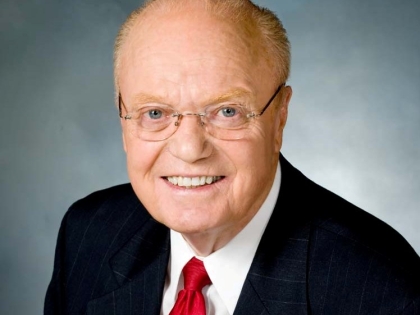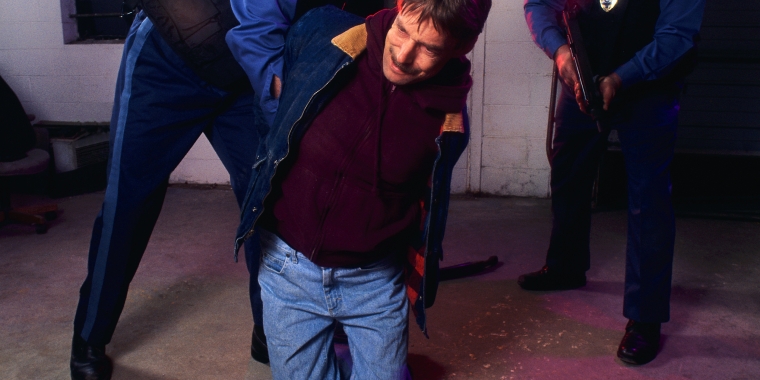
Agreement Reached on 2012-2013 Final Budget
Hugh T. Farley
March 29, 2012
-
ISSUE:
- Budget

Governor Andrew M. Cuomo, Senate Majority Leader Dean Skelos and Assembly Speaker Sheldon Silver today announced an agreement on the 2012-2013 New York State Budget.
The Budget continues the Governor’s commitment to fiscal responsibility while creating jobs and strengthening communities across the state. It closes a multi-billion dollar deficit with no new taxes, fees or gimmicks, limits spending growth to two percent or below for the second year in a row, and launches the New York Works Task Force to invest billions of dollars to rebuild the state's roads, bridges, parks, and other infrastructure and create tens of thousands of jobs.
The New York Works Task Force is the centerpiece of Governor Cuomo's jobs program and will reinvent state economic development with an innovative new strategy that will put New Yorkers back to work rebuilding the state's infrastructure. The Task Force will create tens of thousands of jobs by coordinating comprehensive capital plans, overseeing all investment in infrastructure projects, and accelerating hundreds of critical projects across the state.
The Governor and legislative leaders also announced agreements on key economic development and transportation initiatives, important reforms to improve government efficiency, and measures to strengthen communities across the state.
"For the second straight year, New York State has worked and created a balanced budget based on fiscal responsibility, job creation, government efficiency, and the premise that we must invest in our communities," Governor Cuomo said. "The cornerstone of this budget is the New York Works program, a new and smarter strategy for putting New Yorkers back to work by rebuilding our aging infrastructure and helping put our state's economy back on track, just the way we have put our state government back on track. I commend Majority Leader Skelos and Speaker Silver for working with us to achieve this historic early progress."
Senate Majority Leader Dean Skelos said, "By working together with Governor Cuomo and our colleagues in the Assembly, we have turned the corner in Albany, and for the second year in a row reached a Budget agreement that continues to protect taxpayers and help the private sector create jobs. This agreement puts us in a position to deliver another early budget that controls spending and taxes, and builds on the bipartisan successes we achieved last year. I applaud Governor Cuomo for his leadership and continued partnership, and look forward to enacting a final budget that realizes many long-held Senate Republican priorities."
Assembly Speaker Sheldon Silver said, "Throughout this process, the Assembly’s focus has been on providing the resources necessary to protect our children, students, and our most vulnerable citizens. This budget includes much needed increases in education spending, including an increase in base aid for community colleges for the first time in five years, and vital restorations to programs that protect our state’s neediest citizens. By working together we have made real progress in continuing to rebuild New York’s economy and make the state work to deliver better services for its people. I thank Governor Cuomo and Senate Majority Leader Skelos for continuing to work together with us to make New York State a better place for all New Yorkers to live and work."
The key provisions of the Budget include:
New York Works
Establishes the New York Works Task Force
The New York Works Task Force will coordinate capital plans across 45 agencies and authorities, oversee investment in projects and access to funding, and facilitate the creation of tens of thousands of jobs.
Prior to the New York Works initiative, there was no comprehensive state plan for the $16 billion in annual capital expenditures by 45 state agencies and authorities. In some cases, including with respect to projects by the Port Authority, the MTA, and the Department of Transportation, billions of dollars of taxpayer or commuter funds are being used to fund transportation plans in the same region with no coordination between the agencies. For the first time, the New York Works Task Force will develop a coordinated capital infrastructure plan among agencies and authorities. The Task Force, made up of leaders in finance, labor, planning and transportation will also recommend financing options for projects and methods to accelerate construction of critical infrastructure.
The New York Works Task Force will consist of fifteen members. Nine of the members will be appointed by the Governor and six by the Legislature. All major state agencies and authorities will participate in an implementation council to coordinate capital planning.
All New York Works projects will be posted on the web with real-time updates so that New Yorkers can track the progress of projects in their community. The full list will be posted online over the next several days.
Rebuild Roads and Bridges
The Budget funds the New York Works Program with $232 million in state capital funds and $917 million in new Federal funds for a total of $1.2 billion in new spending to accelerate repair, replacement and improvement of deficient roads and bridges. This funding is over and above the $1.6 billion already allocated this year to the core transportation capital program for roads and bridges. This program is in addition to the advancement of the Tappan Zee Bridge replacement project that will inject billions more into the regional and state economy.
Thirty-two percent of the state's bridges are rated deficient and forty percent of the state's pavement surface is rated deficient. The additional $1.2 billion in accelerated projects selected by the Department of Transportation will include $212 million to address bridge deck and structural replacement or rehabilitation needs on approximately 115 bridges, $250 million for more than 2,000 miles of low cost pavement preservation and pavement treatments, and $700 million for transportation projects of regional or statewide significance throughout the state that had been delayed due to resource constraints.
The New York Works Program's Accelerated Bridge and Pavement program will expedite projects of regional significance to immediately create jobs, address critical infrastructure needs, and achieve savings. The Accelerated Bridge and Pavement program represents a different way of doing business for New York State. Rather than executing 100 different contracts for 100 different bridges, projects will be consolidated under regional contracts – a more efficient process that will enable the state to complete critical projects on time and under budget.
Second Round of Regional Council Awards
Last year, Governor Cuomo created 10 Regional Councils that developed long term strategic plans for economic growth for their regions. These Councils were part of a process that awarded $785 million for job creation and community development. The Budget authorizes a second round of funding for the Regional Councils, including $220 million to implement regional strategic plans – $150 million in new capital funding and $70 million in tax credits from the Excelsior Jobs Program.
In addition, resources from a wide range of existing agency programs will be available to businesses and sponsors for economic development purposes that are consistent with Regional Council plans through the innovative Consolidated Funding Application. This process allows one-stop access for project sponsors to apply and compete for over $500 million in additional funding available through existing agency programs.
Buffalo Regional Innovation Cluster
The Budget includes funding for the first phase of a multi-year $1 billion economic development package for Buffalo. The Governor has challenged the area's Regional Council to develop a viable plan to create thousands of jobs and spur at least $5 billion in new investment and economic activity. The Budget includes $100 million for the first year, consisting of $75 million in capital and $25 million from the Excelsior Tax Credit Program.
New and Expanded Round of NY SUNY 2020
The Budget includes $30 million of capital funding for a new round of the Governor's NYSUNY 2020 Challenge Grants. When combined with an equal share from SUNY, the University's 60 campuses, excluding the university centers, will compete for three $20 million challenge grants.
Energy SuperHighway Initiative
The Budget includes $16.2 million to New York State Energy Research and Development Authority for research and development programs and the development of the 2013 State Energy Plan which is part of the Governor's Energy Highway Initiative. The initiative will develop an action plan for both short-term and long-term actions that will facilitate billions of dollars in private investment in Energy Highway projects. The Task Force recommendations will be a core component of the 2013 State Energy Plan.
Funding the MTA Capital Plan to Improve Transit in Metropolitan New York
The Budget includes the Governor's plan to support full funding of the MTA with $770 million of direct funding from the state. The five-year MTA capital plan contains $22.2 billion for projects critical to transit in New York City, Long Island and the Hudson Valley, and that will produce tens of thousands of jobs. The first two years of the MTA capital plan were funded at $9.1 billion. The Budget will help allow the MTA to obtain the full $13.1 billion needed to achieve the five year capital plan and complete some of the largest construction projects in the history of New York. The MTA Capital Program will also continue to fund the four mega projects underway: 2nd Avenue Subway, Eastside Access for the Long Island Rail Road, the Fulton Street Transit Center and the extension of the 7 Subway to the far Westside. The program will also fund new subway and rail cars, new energy-efficient "green" buses, station rehabilitation, enhanced communications and signals, new rail yards, as well as new elevators and escalators.
Repairing New York's Dams and Flood Control Infrastructure
The state’s Department of Environmental Conservation maintains 106 flood control projects, of which 91 have been rated "minimally acceptable" or "unacceptable" by the Army Corps of Engineers. Additionally, the Department owns 577 dams statewide. Of the DEC owned dams, DEC engineers classify at least 24 dams as "high" and "intermediate" hazard structures, where failure poses serious threat to human life or significant property damage. The New York Works Funds will designate $102 million, leveraging more than $100 million in matching funds, to repair aged and otherwise failing structures, including levees, flood walls, dams, pumps and channels. The $102 million will include $18.5 million to repair state-owned dams, $56 million to perform maintenance of flood control facilities such as levees, and $27 million to implement coastal hazard and inlet navigation maintenance projects, plus over $100 million in matching funds.
Rebuilding New York's State Parks
The New York Works Fund will provide $89 million, leveraging $143 million in total funding, to rehabilitate state parks, representing the single largest infusion in history of capital dollars for New York's parks. Currently, 83% of state parks are deteriorating. Projects will be funded in every region of the state, making improvements in 48 state parks and historic sites that serve 37 million visitors annually. This investment in New York's parks system will enhance the visitor experience and enable our state parks to reemerge after years of decline.
New York State Gaming Commission
Following the landmark agreement made earlier this month to begin the process of amending the state constitution to allow casino gaming in New York, the Budget enacts the Governor's proposal to create a New York State Gaming Commission, including the merger of the Division of Lottery and the Racing and Wagering Board. This reform reorganizes the state's gaming regulatory functions into a single oversight body. The new Commission would be comprised of seven members, five appointed by the Governor, and one apiece appointed by the Senate Majority Leader and the Assembly Speaker. The gaming industry constitutes a vital sector of New York's overall economy and contributes to economic development and job creation across the state. Under this agreement, the regulation of gaming will be conducted in the most efficient, transparent and effective manner possible, and eliminate unnecessary regulation redundancies. The new State Gaming Commission will help ensure that all gaming activity conducted in New York is of the highest integrity, credibility, and quality, and that the best interests of the public are served.
Fiscal Integrity
State Spending Growth Held to 2%
For the second year in a row, the Budget maintains two percent or less year to year growth in state spending, consistent with the tax cap on local governments. State Funds will total approximately $88.8 billion in 2012-13. The Budget achieves flat state agency spending through the ongoing redesign of agency operations to reduce duplication, redundancy and waste. Since Governor Cuomo took office, out year deficits have been reduced by a cumulative $72 billion since taking office.
All Funds Spending Reduced
All Funds spending will total approximately $132.6 billion, a decrease of $135 million from last year. This is the second consecutive year with a net reduction in All Funds spending, the first time this has happened in at least three decades.
Government Performance
Increase in School Aid:
The Budget includes a total of approximately $20.4 billion for school aid, including performance grants to reward academic improvement and school district efficiencies. This represents an increase of $805 million in total education spending, with most of the allocated increase targeted to high needs school districts. The budget includes a total of $125 million to be allocated for performance grants, including $50 million in continuing payments to the school districts who will receive awards in the first round of grants, and an additional $75 million in awards to a second round of school districts.
Interchangeability
To achieve greater efficiency in government operations and improve performance, the Budget enacts the Governor's proposal to ensure fiscal flexibility in order to expedite government consolidation and streamlining. The interchangeability provisions give the state the authority to move certain funds between state agencies that will save money in back office functions such as business services, information technology and call centers. This will allow the state to move functions from one state agency to another to improve efficiency, ensure better performance, and reduce costs for taxpayers. The transfers will not be used to alter or shift programmatic functions of the agencies.
Transforming State Procurement Process
The Budget includes new measures to allow state agencies to purchase common goods and services through centralized contracts. The Office of General Services (OGS) will be able to buy in bulk – from pens to cars – harnessing the state's purchasing power to save $100 million in 2012-2013 and a projected $755 million over five years. The budget further eliminates the duplicative and wasteful review of statewide centralized contracts, accelerating the opportunity for agencies to use the new centralized contracts and achieve savings as soon as possible. Local governments and not-for-profits will be able to participate in the new centralized contracting process, increasing the state's purchasing power, while passing down reduced costs to localities and multiplying the savings OGS will achieve for the taxpayers.
Consolidation
In addition to creating a New York State Gaming Commission through the merger of the Division of Lottery and the Racing and Wagering Board, the Budget includes transferring the management and operations of the Belleayre Ski Center from the Department of Environmental Conservation (DEC) to the Olympic Regional Development Authority (ORDA). Given ORDA's expertise in managing other ski centers (Gore and Whiteface), Governor Cuomo proposed this transfer to improve operations and opportunities for tourism at Belleayre Mountain.
The Budget further includes the elimination of 25 boards and commissions that are no longer active or whose missions have been completed or become redundant. A list of affected entities is here: http://www.governor.ny.gov/assets/documents/EliminatedAgenciesandCommissions.pdf.
To continue making government more efficient, the bill includes mergers and consolidations of boards that have related missions. The agreement includes the following mergers:
· Department of Agriculture & Markets: New York State Veterinary Diagnostic Lab Advisory Board is merged with the Animal Health Issues Committee
· Department of Health: Breast and Cervical Cancer Detection and Education Program Advisory Council is merged with the Ovarian Cancer Information Advisory Council.
State Relief for Local Medicaid Expenses
The Budget provides significant mandate relief in Medicaid spending for all counties and New York City. The Budget includes a state takeover of growth in the local share of Medicaid costs and implements a phased takeover of local government Medicaid administration expenses. In 2013-14, local government Medicaid growth will be reduced to two percent, and then reduced by an additional one percent annually over the subsequent two years so that in 2015-16, counties and New York City will no longer have to contribute toward the growth of Medicaid expenses. The takeover of the three percent Medicaid growth factor will save counties and New York City $1.2 billion over five state fiscal years. The phased takeover of local government administrative costs of Medicaid will accomplish statewide economies of scale, lead to associated savings and help New York achieve reforms proposed at the State and Federal levels.
Reform Teacher Disciplinary Hearings
The Budget includes several reforms to the teacher disciplinary process. The reforms include allowing the State Education Department to set reasonable limits on the costs of teacher disciplinary hearings, disqualify hearing officers who fail to comply with statutory deadlines and allow the State make use of new technology to help reduce the cost of the hearing.
Medicaid Spending
The Budget continues the two year appropriation structure and limits Department of Health Spending to four percent, commensurate with the Medicaid spending cap. In addition, the Budget proceeds with the Medicaid Redesign Team’s recommendations, including investment in affordable housing for high cost populations, enhancements in essential benefits and relief to essentially community providers.
Community Building
Public Assistance
The Budget provides funding for core supportive services for needy populations and implements measures to improve program performance. Governor Cuomo secured additional funding through the Federal Temporary Assistance for Needy Families program, allowing for an increase of 5% in the public assistance grant effective July 1, 2012, to be followed by an additional 5% increase on October 1, 2012. These are the final increments of a multi-phase increase in the public assistance basic grant, which has not been increased since 1990.
Community Colleges
The Budget includes an additional $31.3 million in support for local community colleges, raising base aid from $2,122 to $2,272 per full-time equivalent student. Community colleges are important economic drivers that educate students, retrain workers, and partner with local businesses. This additional support will allow community colleges across the state to expand class offerings, keep tuition affordable, and hire additional faculty.
Higher Education
Consistent with the provisions in the NYSUNY 2020 Challenge Grant Program, the Budget maintains General Fund operating support for SUNY and CUNY colleges at prior-year levels. The Budget also accommodates the authorized 2012-13 tuition increases by providing $113.2 million in additional spending authority for SUNY and $66.6 million for CUNY.
Juvenile Justice – Close to Home
The Budget launches Governor Cuomo's Close to Home Initiative that will help the state reduce crime, improve outcomes for youth and the communities in which they live, and increase the efficiency of the juvenile justice facility system. The Close to Home legislation allows New York City to take responsibility for the care of lower risk youth who come from the City. While youth committed to secure level juvenile justice facilities will continue to be in State custody and facilities, New York City youth currently in State non-secure and limited secure facilities will be transferred to City-administered programs and facilities. Youth from New York City needing this level of care going forward will be in the custody of New York City and served in settings that are appropriate for their educational, mental health, substance abuse and other service needs, without compromising public safety. New York City will take over this responsibility from the State with regard to youth in non-secure placements no sooner than September 1, 2012, and for youth in limited secure placements no earlier than April 1, 2013, following the approval by the State of comprehensive implementation plans for each level of care.
Housing Assistance
The Budget provides $14.3 million for 208 urban and rural community-based organizations that to help create additional home ownership opportunities and assist with the development and management of affordable rental housing.
Foreclosure Relief Unit
The Budget provides $9 million for the continuation of mortgage foreclosure counseling services through Homes and Community Renewal, with additional services financed with proceeds of the National Mortgage Servicing Settlement Agreement. In addition, the Department of Financial Services will establish a new Foreclosure Relief Unit to provide counseling and mediation services to help New Yorkers stay in their homes.
Increased Resources to Enhance Bus Inspections
The Budget gives DOT the ability to increase bus inspections and improve passenger safety. DOT will be able to conduct an additional 5,000 to 7,000 roadside inspections with funding agreed to in the budget. Currently, bus operators undergo two routine inspections per year by DOT, regardless if they meet DOT standards or not. This law will enhance public safety by allowing DOT to conduct follow-up inspections if an operator fails any of its previous inspections.
Office of New Americans
The Budget establishes an Office of New Americans within the Department of State to support efforts to assist legal permanent residents to better participate in the state's economy and civic life. The Office of New Americans will focus on expanding access to English language education services, promoting U.S. citizenship and civic involvement, and expanding business opportunities for new American business owners.
Translation Services for Pharmacy Prescriptions
This Budget requires the State Education Department and the Department of Health to issue regulations that will require chain pharmacy stores to provide oral and written translation services to customers with limited English proficiency who are filling prescriptions. Such critical services will ensure that these customers fully understand the nature of the medication they're receiving and the instructions for its use so that a language barrier does not become a threat to their successful treatment.
Share this Article or Press Release
Newsroom
Go to Newsroom


